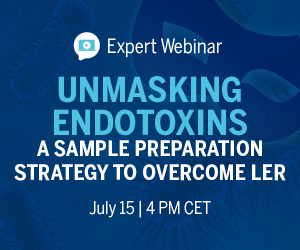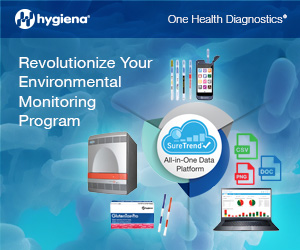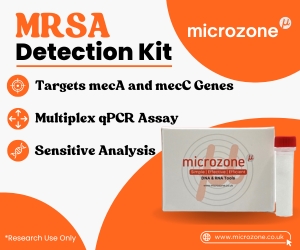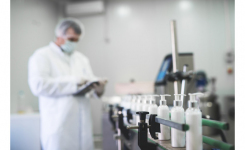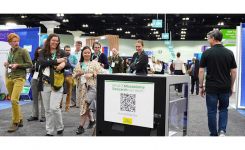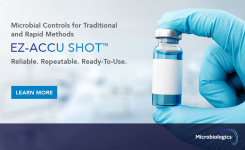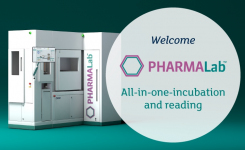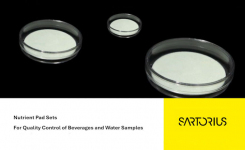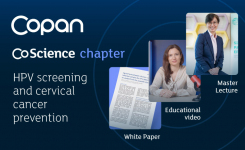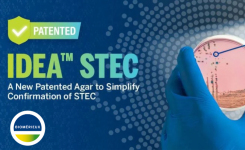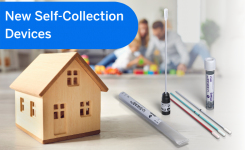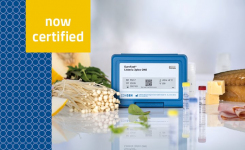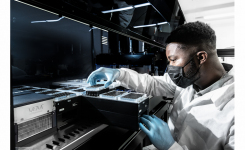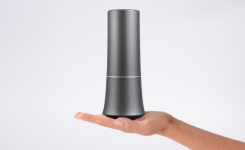
Perhaps more than in any other sector of industrial microbiology, the routine microbiological testing carried out by the pharmaceutical manufacturing industry is determined by regulatory requirements. This applies not only to what should be tested and when, but also to the methods that should be used. While strict regulations are useful in providing clear requirements for testing, they can also act as a barrier to the implementation of new laboratory technologies. But the current shift towards parametric product release and a ‘quality by design’, risk-based approach for product and process development promises to break down, or at least weaken, some of those barriers.
A good example of the changing emphasis in the regulatory approach is ‘Process Analytical Technology’ (PAT). PAT has been defined as “a system for designing and controlling manufacturing through timely measurements (during processing) of critical quality and performance attributes for raw and in-process materials and also processes with the goal of ensuring final product quality.” Its aim is to enhance process understanding by harnessing modern analytical technology, together with information management and analysis tools, to identify and control the critical parameters that affect the process. The PAT approach is being encouraged in the USA by the FDA PAT initiative and in the EU by the European Medicines Agency (EMEA).
These changes are at last creating a favourable climate for the implementation of rapid microbiological methods (RMM) in pharmaceutical laboratories. Traditional culture-based microbiological analysis techniques are of very limited value in PAT – they simply take far too long to produce a result. But as RMM continue to develop, becoming more capable of producing results in real-time, they will be far more useful, since timely microbiological data are often critical, not only for product release, but also for continuous process monitoring and control. As a result, many microbiologists in the pharmaceutical industry are taking a closer look at the technologies available. What follows is an overview of commercially available RMM technologies.
Potential applications The obvious application for RMM in pharmaceutical manufacturing is in the release of finished products, where the shorter ‘time to result’ may generate considerable cost savings. But RMM can also play a key role in other routine tests, including:
- Raw material testing
- Quality control of pharmaceutical manufacturing water
- In-process testing
- Microbial limit testing
- Bioburden assessment
- Process water testing
- Environmental monitoring of process areas
- Sterility testing
These applications, especially raw materials analysis, bioburden assessment and environmental monitoring, all have the potential to contribute to PAT and parametric release. Implementation of RMM can also help to provide timely trend analysis and early warning of contamination problems. In the near future, the technology is likely to be available for continuous real-time monitoring of the manufacturing process, resulting in very significant savings in both time and production costs.
Technologies
Many RMM technologies have been developed over the last 20-30 years. Most of these have been marketed mainly in the clinical sector, and to a lesser extent in the food manufacturing and water microbiology sectors. Nevertheless, some have specific pharmaceutical applications and others have been developed solely for the pharmaceutical industry.
Growth-based technologies
Growth based RMM technologies differ from conventional culture methods in that they rely on the detection of biochemical or physiological growth indicators rather than visible growth. This generally allows much more rapid detection, but often requires a short enrichment stage before micro-organisms can be detected, especially in samples containing low levels of contamination. Examples of growth-based RMM include:
ATP-bioluminescence - Adenosine triphosphate (ATP) bioluminescence is a well established rapid method for assessing contamination levels in pharmaceutical products and raw materials. It utilises a specific substrate and enzyme combination, luciferin/luciferase, to breakdown microbial ATP from growing cells and produce visible light, which can be measured using a luminometer. The amount of light is related to the number of microbial cells present. The main drawback is that non-microbial ATP is also detected. Several commercial systems have been developed for a range of pharmaceutical test applications, especially for filterable samples where non-microbial ATP in the sample is less of a concern. Where low numbers of organisms (<100 CFU) are present, an enrichment step preceding the ATP bioluminescence assay is typically required. A step designed to reduce non-microbial ATP levels prior to the release of microbial ATP may also be required, usually using an enzyme and surfactant preparation. ATP-bioluminescence tests typically require 24-48 hours to complete including enrichment.
Colorimetric growth detection - Colorimetric growth detection methods rely on a colour change being produced in a growth medium as a result of microbial metabolism during growth, often as a result of CO2 production. Clearly the range of organisms that can be detected by this method is limited by variations in metabolism, but systems able to detect most aerobes and acid-producing types, such as lactobacilli and yeasts, are available. an example of a commercial colorimetric assay system is the BacT/ALERT® 3D system from bioMerieux, originally designed for clinical applications, but also suitable for testing some pharmaceutical materials.
Autofluorescence detection - All living cells auto fluoresce under blue light and this can be used to detect microbial colonies growing on a solid surface long before they are visible to the naked eye. This technique is particularly useful for filterable samples, where a membrane filter can be incubated on a conventional nutrient medium and scanned using highly sensitive imaging systems to detect microcolonies several days earlier than using traditional colony counting methods. Auto fluorescence detection has been commercialized by Rapid Micro Biosystems as The Growth Direct™ System, which uses a large area CCD imaging system without magnification to detect developing microcolonies in approximately half the time of the conventional culture method. The system has the advantage that it is non-destructive and mirrors the compendial method, thus is straightforward to validate. The system is also fully automated from sample prep onward.
Viability-based technologies
Viability based RMM technologies do not rely on microbial growth to detect contamination, but instead use cell labelling techniques to detect and quantify viable microorganisms. This approach has the potential to detect a wide range of organisms, including yeasts and moulds, within a few minutes, but where very low levels of contamination (<10 CFU/ml) are present an enrichment step may be required. Several commercial products are available, all employing similar technology.
Molecular methods
Molecular biology-based microbial detection systems have been making rapid progress in the clinical and food microbiology sectors and are now also available for pharmaceutical applications. The most commonly used technique to date is the polymerase chain reaction (PCR), which targets and amplifies specific sections of microbial nucleic acids to provide a highly specific detection technique, and which, in the case of real-time PCR where amplification and detection are simultaneous, can produce results in a few hours. Many commercial PCR systems target specific microbial species, such as Salmonella, but there are also products aimed at the pharmaceutical industry, which are able to detect a much wider range of contaminants. Examples include BIOTECON Diagnostic's microproof Hygiene Screening System.
Molecular based microbial identification systems are also available for pharmaceutical applications and are described in more detail in our Test Method Guide to Microbial Identification and Strain Typing Using Molecular Techniques
Endotoxin testing
Endotoxins are lipopolysaccharide contaminants derived from the cell walls of Gram-negative bacteria. Endotoxin detection is an important function for pharmaceutical microbiology laboratories and is usually done using the long-established Limulus Amoebocyte Lysate (LAL) assay. Rapid semi-automated systems using sophisticated electronics have been developed for endotoxin testing and are claimed to be capable of real-time tests for PAT applications.
An example of a rapid endotoxin test system is the Endosafe®-PTS™ assay available from Charles River Laboratories International. Endosafe uses a quantitative LAL-based chromogenic assay method together with a sensitive spectrophotometer and dedicated detection software. It comes as a multi-cartridge automated system that can analyse five samples in about 15 minutes, and as a portable hand-held version. Endotoxin testing is decribed in more detail in Test Method Guide to Endotoxin Detection Methods for Pharmaceuticals and Medical Devices
Rapid Air Monitoring
Environmental monitoring is another key requirement in pharmaceutical manufacturing facilities and rapid detection of airborne contamination in clean areas is particularly important. Most microbiological air sampling systems rely on conventional culture technology and so cannot give rapid results, but several instruments have been developed that can speed up this process.For example, variations on impinger air sampler designs, such as the Coriolis®μ cyclonic air sampler (validated according to ISO 14698) made by Bertin Technologies (France), and the SAS-PCR sampler from Bioscience International, use a sterile liquid media, rather than the more common agar plate or strip; it allows subsequent detection of microbial contamination by rapid and specific molecular methods for identification and/or quantification. More rapid still are Azbil BioVigilant® Systems Instantaneous Microbial Detection (IMD) instruments, which sample the air continuously and use a technique called Mie scattering to measure particle size in combination with laser-induced intrinsic fluorescence to indicate biological activity. IMD technology is one of very few methods that can produce results in real time. It can alert operators immediately when contamination is detected. But other techniques are needed to subsequently identify the contaminants and the source of contamination.
Validation
In the past, difficulties with validation have proved to be a serious obstacle for the implementation of RMM in pharmaceutical manufacturing. But in recent years this has changed. The Parenteral Drug Association (PDA) has published validation guidance for RMM as Technical Report TR-33 (updated in 2013) and the US and European Pharmacopoeias now include chapters on the validation of alternative microbiological methods (USP <1223> Validation of Alternative Microbiological Methods & Ph. Eur. 5.1.6. Alternative Methods for Control of Microbiological Quality). Both chapters are under review and it is hoped that updated versions will adopt a harmonised approach to RMM validation in line with that taken in TR-33 (PDA Technical Report 33). The regulatory authorities now offer more encouragement for manufacturers to validate alternative methods and several rapid product release test methods have already been approved by the FDA.
Novel cell and gene based therapies have helped push the move to acceptance of alternative methods as these products tend to have a short shelf life and low production volumes making the standard compendial methods unsuitable for product release. PDA Technical Report 33
Making the Financial Case for RMM
Choosing the right RMM for a particular application requires a detailed evaluation of the available technologies, not just in terms of their technical benefits and drawbacks, but also their contribution to the business through return on investment (ROI). Rapid methods tend to carry higher costs than conventional methods, but may also deliver significant savings in the longer term. Therefore it is essential to include financial expertise in any evaluation of a new technology, so that an ROI can be calculated accurately and a robust business case for investment can be made. Points to consider are likely to include:
Technical benefits
- Significant reductions in time-to-result over conventional methods
- Improved sensitivity, specificity and accuracy
- High degree of automation
- Reduced staff training requirement
Business benefits
- Significantly more rapid product release
- Improved process control and lower inventories at all processing stages
- Fewer repeat tests, production delays and rejected product
Only by considering these benefits against the initial and ongoing costs of investment, validation, implementation and consumables can an RMM technology be properly evaluated.
As an aid to the evaluation process, the PDA periodically runs courses on RMM, which provide an opportunity to experience different technologies in a laboratory environment and get information on validation and regulatory issues. See the following link for more information on upcoming courses.
Some suppliers also provide help to prospective customers looking to calculate costs and potential savings for alternative microbiological methods. For example, Celsis offers a free Financial Impact Assessment to prospective purchasers of its rapid detection systems.
Get the latest updates in Rapid Microbiological Test Methods sent to your email? Subscribe to the free rapidmicrobiology eNewsletter


